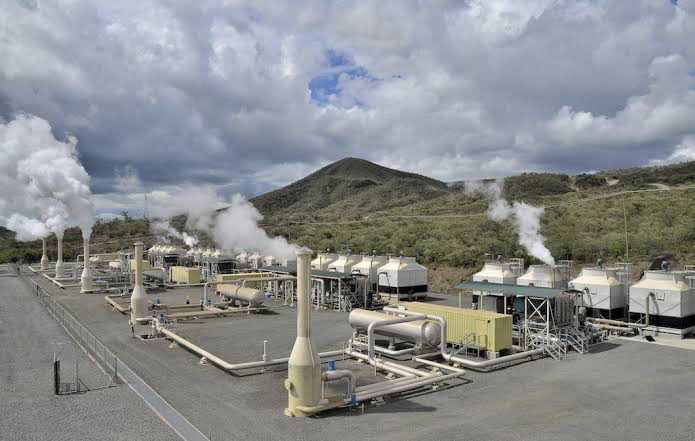Africa, a continent abundant in natural resources, is increasingly looking to its geothermal potential as a solution to its pressing energy needs and environmental challenges. At the forefront of this shift is Kenya, the leader in geothermal energy production in Africa, offering valuable lessons for its neighbors.
As of 2023, Kenya has installed geothermal capacity of 891.8 MW, making up 47% of its renewable energy mix. This significant achievement highlights geothermal power’s role in providing stable and reliable energy, essential for Africa’s pursuit of a clean and just energy transition.
Situated along the East African Rift Valley, countries like Kenya, Ethiopia, Tanzania, and Uganda are endowed with vast geothermal resources. Experts estimate that East Africa alone holds the potential to produce over 15,000 MW of geothermal energy. Harnessing this resource could transform the region’s energy landscape by providing a steady and reliable power supply that does not depend on weather conditions like solar or wind energy.
Geothermal power plants are capable of operating 24/7, offering a constant and reliable base load of electricity. This is crucial for Africa, where a consistent energy supply is a backbone for industrial growth, healthcare, education, and overall economic development. By closing the continent’s significant energy access gap, geothermal energy could bring electricity to underserved and rural communities, fostering broader socio-economic benefits.
Geothermal energy not only provides a stable power supply but also serves as a clean and environmentally friendly alternative to fossil fuels. It produces minimal greenhouse gas emissions and has a significantly smaller environmental footprint compared to coal or natural gas power plants. This shift is particularly vital for African countries, which are among the most vulnerable to the impacts of climate change.
Investing in geothermal technology allows these nations to reduce carbon emissions actively, contribute to global climate goals, and preserve natural ecosystems.
Kenya’s approach to geothermal energy offers a blueprint for success. The country is home to the Olkaria Geothermal Plant, the largest of its kind in the world. This success story is backed by strong government commitment and clear policy frameworks that encourage investment and development in geothermal technology.
“The past success of geothermal development in the country has emboldened us to go big. Geothermal energy remains our anchor portfolio in the energy mix,” stated Davis Chirchir, Cabinet Secretary of the Ministry of Energy and Petroleum, during the launch of Kenya’s Strategic Plan 2023-2027.
This proactive approach is supported by technological advancements that make geothermal energy more accessible and cost-effective. Innovations such as enhanced geothermal systems have improved the efficiency and feasibility of geothermal projects, making them more attractive to investors.
The potential of geothermal energy in Africa has not gone unnoticed by the international community. Investors and development agencies are increasingly recognizing this potential, providing financial support and forming partnerships to help overcome the initial high capital costs and associated risks of geothermal projects.
For instance, Ethiopia, following Kenya’s lead, has launched successful geothermal ventures like the Aluto-Langano plant, signaling a growing regional momentum towards this sustainable energy source.
For other African nations looking to explore their geothermal potential, adopting a strategic approach is crucial. This includes implementing strong policy support, investing in research, building institutional capacity, and engaging communities effectively.
A holistic strategy that integrates technology, policy, and community engagement can help unlock the transformative power of geothermal energy across the continent. As African countries continue to grapple with energy poverty and climate change, geothermal energy stands out as a promising solution to build a sustainable and energy-secure future.
Kenya’s example not only illuminates the path but also offers hope and a practical framework that other African nations can adapt and adopt to meet their unique energy challenges and opportunities.
Source: ESI Africa



